Get Primed for Amazon Prime Day 2021: Seller’s Ultimate Checklist
When is Amazon Prime Day 2021? That is the question that everyone’s been dying to know.
The global pandemic has resulted in a 2020 Prime Day postponement to October. People have been speculating that the event this year will either return to July – the month of choice since the beginning – or arrive early, in June.
Although Amazon hasn't mentioned the exact dates for Prime Day 2021, CFO Brian Olsavsky confirmed in a recent earnings call that the event will take place late in the second quarter, implying that a June date is almost certain. Other sources even reported that there might be two Prime Days occurring in 2021.
You're not alone in wondering what that means for the retailer's biggest sale event of the year. Whatever happens, we're continuing to closely track all the Prime Day dates. But for now, here's what you can expect based on previous years' events, as well as some helpful hints for preparing for this year's event. It’s never too early to start planning!
Quick Guide:
Amazon Prime Day Through the Years
What Happened on Prime Day 2020
What Prime Day 2021 Will Look Like
What Amazon Sellers Can Do to Prepare for Prime Day 2021
- #1 – Consider A Combination of Fulfilment Options
- #2 – Create Product Bundles
- #3– Always Make Sure You Have Enough Inventory
- #4 – Provide Consumers with a Variety of Ways to Save
- #5– Adjust Your Pricing
- #6– Optimise Your Product Listing
- #7– Improve Your Sponsored Products Program
- #8 – Optimise Your Amazon Review Strategy
What is Amazon Prime Day
Since its inception in July of 2015, Amazon Prime Day has grown to become one of the biggest annual shopping events of the year. It's a testament to Amazon's retail strength that it was able to build its own holiday in the middle of the summer and make it exclusive to Amazon Prime members.
The sale offers more deals than Black Friday on a variety of products including electronics, toys, video games, movies, clothing, patio, lawn and garden, fitness, outdoor things, and more. On top of that, new and current Prime members also receive exclusive offers such as "Lightning Deals" and "Deals of the Day" on goods every 10 minutes during the shopping event.
When Amazon launched their first Prime Day in 2015, it lasted for 24 hours and Amazon gave access to members in nine countries: The United States, United Kingdom, Spain, Japan, Italy, Germany, France, Canada, and Austria. Amazon Prime Day has risen "exponentially" since 2015. Since Prime Day is a company-created annual event it's one of a kind in terms of size. Unlike Black Friday and Cyber Monday, the sale does not fall during the holiday shopping season. Amazon Prime Day is held in mid-July every year, which is a strategic decision made by the company: Summer is traditionally a slow season for retailers. Amazon Prime Day is an effort to change that.
Amazon Prime Day Through the Years
Amazon Prime Day has only been around for a few years, but it has already had a tremendous effect. The number of Prime Subscribers has more than tripled since the first Prime Day in 2015. A rise in subscribers means more people can participate in Prime Day, which means more profits for more sellers!
In just a few years, Amazon has transformed a special event to commemorate a landmark anniversary into one of the world's most important shopping days. Let's take a look at how the eCommerce mega-event has evolved.
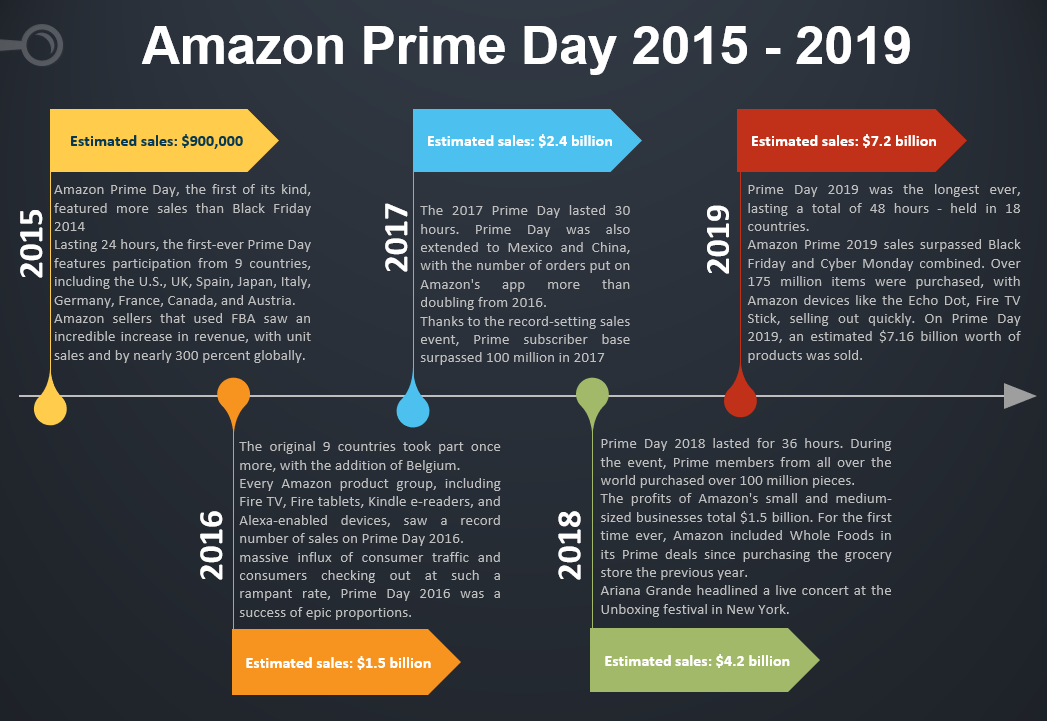
What Happened on Prime Day 2020
Before we can look forward to Prime Day 2021, we must first look back at Prime Day 2020, which was an outlier in the event's history.
Due to distribution issues caused by the ongoing COVID-19 pandemic, Amazon was forced to reschedule the shopping event from July to October. Aside from the timing change, Prime Day 2020 saw a change in ad strategy, a slight shift in the list of the top items, and moderate changes in consumer behaviour, including a shift toward holiday gift purchasing.
The event itself, however, was worth the wait – for both sellers and shoppers.
Of course, shoppers had more discounts to choose from than ever before. But for 2020, Amazon shifted its focus significantly to align with consumers who are more interested than ever in supporting small and local businesses. Amazon generated $900 million in sales for small businesses through a special “spend $10, get $10” promotion for customers who purchased from a small business in the weeks leading up to Prime Day. This promotion earned Prime members tens of millions of dollars.
Third-party sellers (which are mostly small- to medium-sized businesses) also saw record-breaking sales, netting small and medium-sized businesses a massive $3.5 billion in sales, which is a 60% increase from 2019’s sales.
Even though Amazon did not fully disclose the information on how much they profit from the 2020 Prime Day, Digital Commerce 360 estimates that the event sales hit $10.4 billion – up from $7.16 billion (+45.2%) over Prime Day 2019 and from $4.19 billion (+148.2%) over Prime Day 2018.
The proximity of Prime Day 2020 to the holiday season was a major factor in the event's success. According to Digital Commerce 360, consumers purchased more holiday gifts last year compared to previous Prime Day events, and a higher percentage of shoppers browsed sites other than Amazon.com during Prime Day last year than in 2019.
Nevertheless, the increase in sales year after year indicates that Prime Day remains a critical sales event for marketplace sellers, with significant opportunities for growth across all channels.
What Will Prime Day 2021 Look Like?
This year's Prime Day is expected to look more normal than it did in 2020, though COVID-19 restrictions will remain in effect. The event is expected to take place this summer rather than in the fall, considering Amazon has recently released Prime Day FBA inventory cut-off dates for 2021 and deadlines for discount and voucher applications.
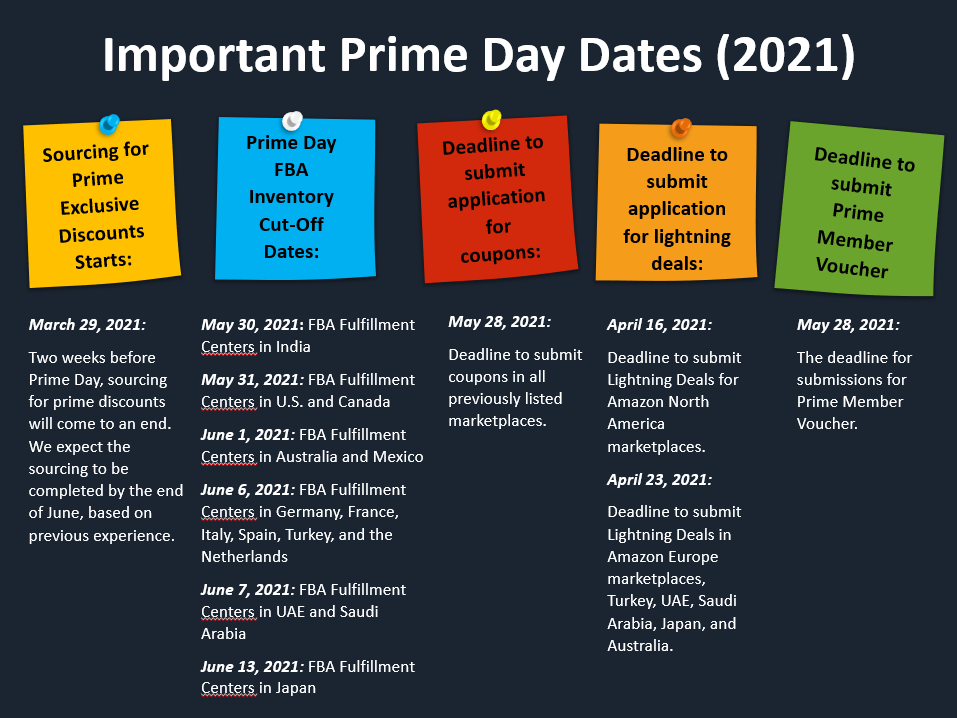
What's different now is that, while shoppers are even more frugal with their spending than they were earlier in the pandemic, they're finally getting closer to a mostly vaccinated public, and all the opportunities to shop and socialise that come with it. Amazon is in a great position to capture consumers' renewed spending on gatherings and travel by shifting Prime Day into Q2 (just in time for summer) - and we all know that Amazon continues to lead as the top destination for consumer product searches.
Is Prime Day Really Worth It?
Promoting your product to an exclusive and shopping-friendly audience at one of the year's most awaited e-commerce events does come with an impressive price tag, especially when it comes to submitting your Lightning Deal application.
For Amazon US for example, sellers are required to pay a fee of:
$US300 /deal – If your deal runs during Prime Day week but NOT on Prime Day.
$US500/deal – If your deal runs on Prime Day only.
That’s a significant fee increase compared to a normal day – when running a lightning deal costs a seller $US150 per deal.
The high cost of Prime Day Lightning Deals can deter sellers who are unsure whether their products' success will justify such a high investment.
But think about this.
Every year, Prime Day sets sales records. Of course, this parallels the fact that more and more people are becoming Amazon Prime subscribers all spread out in 19 different countries. According to a report by Statista, As of the first quarter of 2021, Amazon reported 200 million paying Prime members worldwide, up from 150 million paid Prime members around the world at the end of the fourth quarter of 2019.
For a variety of reasons, Prime Day has become increasingly important. Retailers such as Walmart, Target, eBay, and Google would profit from the legendary shopping event. Small-medium-sized businesses (SMEs) have seen a large increase in online sales as a result of this halo effect. Clearly, these retail powerhouses took advantage of Amazon Prime Day's halo effect and saw an increase in sales compared to a typical business day. This means that businesses that use multiple channels of distribution can increase their sales during this time period.
In addition, let’s not forget how Amazon remains one of the few companies to benefit from the COVID-19 pandemic. As overall e-commerce revenue nearly doubled in May, every lockdown "click to purchase" pushed the company a little closer to complete dominance of online shopping.
For those reasons - the increased traffic, sales, and publicity could easily justify the initial investment.
What Amazon Sellers Can Do to Prepare for Prime Day 2021
To fully reap the benefits of Amazon Prime Day, sellers must take action now to prepare their businesses for the potential increase in sales. While Amazon has not yet formally announced the date of its annual shopping event, multiple reports have suggested that Prime Day will take place in mid-to-late June this year, which means the time has come to start planning for Prime Day.
Let’s take a look at some tips on how to be fully prepared to ensure a successful selling experience on Amazon Prime Day this year.
#1 – Consider A Combination of Fulfilment Options
With Prime Day comes increased sales, which means more orders to fill. The good news is that you have some options for how to go about it. To begin, you can use Fulfillment by Amazon (FBA), which is the most common way to engage Prime customers. With FBA, you send your inventory to Amazon, and they fulfil your orders on your behalf.
Amazon's Seller Fulfilled Prime (SFP) program is another option. Amazon announced that they have extended their Prime privileges to sellers who store and ship their own inventory through the Amazon SFP program. During Prime Day, Amazon listings participating in the SFP program would have the same Buy Box eligibility as FBA listings. Sellers will also be able to use the new API to send their packages via Amazon. Sellers will be eligible for Amazon's negotiated prices and service levels, which include two-day shipping, Sunday delivery options, and same-day delivery.
It enables you to fulfil your own orders while still participating in the Prime program, which is the whole point of Prime Day!
So now the question is how will Amazon Seller Fulfilled Prime & FBA impact merchants on Prime Day?
- You’ll have access to Prime members
Since Prime Day is exclusively designed for Prime members, by being enrolled in the FBA or SFP program, you open yourself up to much higher sales opportunities by getting access to the Prime membership base. If you take a look at the stats on Prime members’ shopping behaviour, you’d be surprised at how much more they spend in comparison to their non-Prime counterparts.
- Your inventory can be kept in a single location
One of the main advantages of being enrolled in the SFP program, aside from Prime eligibility and free two-day delivery, is that it would help sellers avoid having to break up their inventory. Not only can you save money on shipping (especially for big or heavy items), but you'll also be able to have all of your inventory in one place rather than having to share it with Amazon.
- Easier return handling
Unfortunately, FBA sellers have run into a host of issues when it comes to returns. One of the toughest parts about handling returns with FBA is correctly linking specific items to specific returns. FBA has seen a spike in consumer fraud as a result of this. Prime sellers will now manage returns on Prime orders directly through Amazon Seller Fulfillment, which we expect would make it easier for sellers to monitor and recognise product returns.
- Benefits Merchants with Large / Heavy Products
Previously, sellers had to pay a fee to send their goods to an Amazon fulfilment center from their own facility or site, and it can be costly when it comes to big bulky items. But now, sellers no longer have to pay the extra charge and can send the product directly to their customers, thanks to Seller Fulfilled Prime.
But of course, you can be enrolled in the SFP program and list your products with the Prime badge as long as all the requirements are met – and you must complete a trial period to show that you can meet the requirements for Prime fulfilment excellence and customer satisfaction.
Aside from COVID-19, combining fulfilment strategies can be beneficial as a strategy for a successful Prime Day. Consider using FBA for products with a healthy margin, so free shipping isn't a problem, and SFP for items with a smaller margin, so you can pass the shipping costs on to the consumer.
#2 – Create Product Bundles
Your main target on Prime Day should be to increase revenue by moving as much inventory as possible. The best method is to create product bundles that complement each other. Bundling products has always been a way to boost the average order value. Buyers may find it difficult to search for different products multiple times. It is important for sellers to alleviate this pain. If you build product packages of products that are commonly purchased together, they will be more popular.
For Amazon Prime Day, it is crucial to use product bundling as a strategy to create an exclusive ASIN rather than multi-packs of the same products.
“Prime Day could also be an excellent opportunity to try out a promotion. Especially an aged inventory that isn’t selling. Consider bundling that in as a gift or discounted offer with purchase of one of your more popular items to help those slower-moving products get some attention on Prime Day, too.”
- Jeff Coleman, Director of Account Management | CPC Strategy
There are several types of bundling techniques that are effective:
Mixed bundling: Offering products that can be purchased in bundles or individually.
Cross-industry bundling: Offering products from several companies that are complementary to one another.
New or lesser product bundling: Combining a newer or less effective product with a more common product to help gain popularity.
Here is an example of a product bundling technique where a seller is offering several products for a cheaper price – but can be bought separately.
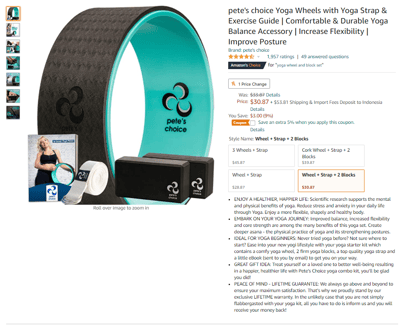
Source: Amazon
Product bundling technique is specifically important on Amazon Prime Day because is a unique tactic for sellers to minimize Buy Box rivalry, in addition to providing value to customers. Bundling is a winning strategy for sellers not just because it increases sales opportunities, but also because rivals find it difficult to track and compete against your ASIN.
When a reseller creates a bundle pack, they effectively become the brand for that specific ASIN.
#3– Always Make Sure You Have Enough Inventory
Before Amazon Prime Day, make sure you thoroughly evaluate your Fulfillment by Amazon (FBA) inventory.
For Prime Day, you must have enough inventory. You will face suspension if you have a large number of orders and no stock to fill them. Make sure you have plenty of your best-selling items on hand. Though Prime Day is a good day to get rid of slow-moving products and save money on FBA fees, it can also spell disaster if you don't keep an eye on stock levels.
“Sellers can expect to see a huge jump in sales on Prime Day. But, the high consumer demand Amazon has created continues all 365 days a year. So the challenge is always to stock up without stocking out. This can be especially challenging after Prime Day.
While selling out on Prime Day may sound great in theory, a post Prime Day stockout can cost you your place within Amazon and cause you to lose a lot of the selling momentum you’ve built up. Be prepared to keep your selling momentum going long after Prime Day by investing in extra stock or reinvesting your Prime Day earnings right away.”
- Vicky Sullivan, Marketing Manager | Payability
In addition, you should make sure to send your FBA inventory shipments on time. Since FBA receiving is likely to slow as we get closer to Prime Day, having your inventory sorted ahead of time will help you avoid the headaches that will undoubtedly arise as the date approaches. Prime Day FBA inventory cut-off deadlines for 2021 have been announced by Amazon. FBA sellers should make sure that all new product hits fulfilment centres before the event to prevent stockouts.
#4 – Provide Consumers with a Variety of Ways to Save
Offer coupons to customers
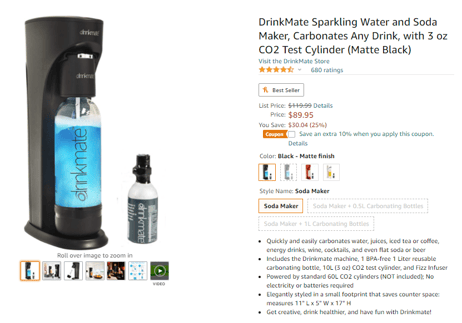
Source: Amazon
Amazon Coupons are a great way to grab the attention of a bargain-hunting Prime Day shopper. Amazon Coupons are digital coupons that showcase discounts whilst promoting your products. This method allows you to offer a percentage off your item or a dollar off discount and your customers can "clip" the coupon and place it in their shopping cart.
Since a coupon appears as a bright orange tag next to the list price on the product description tab, consumers can't skip it and don't have to go looking for discounts on a different page, it's the easiest way to let customers know you're offering reduced Prime Day rates.
Offer Lightning Deals
An Amazon Lightning Deal is a sale on Amazon that provides a limited number of offers on a product for a limited time – typically a few hours. The deal is valid until the end of the day, or while stocks last. Customers are more likely to buy immediately because Lightning Deals are time-sensitive, increasing your product revenue.
Although Lightning Deals are usually available in the marketplace, they are only available to Prime members on Prime Day. Lightning Deals must be submitted ahead of time within a specific submission window (now closed for 2021).
Although the fees can be high, implementing Lightning Deals during Prime Day is beneficial both short and long-term for your business. Here’s why:
Exposure for your brand and product - The most significant advantage of running a Lightning Deal is the increased brand awareness it can provide. Your product will be prominently displayed among Amazon's best sales, and even shoppers who choose not to buy it during the deal's duration will be made aware of it.
The best way to clear out inventory - Lightning Deals are an excellent method to get rid of your inventory for whatever reason (If you have seasonal items or items that are being phased out.
Opportunities to gain more reviews - Increased product viewings and purchases would naturally result in more product reviews on your seller page.
Organic rankings improved during the sale - Items that are currently on sale as part of a Lightning Deal are marked in Amazon's marketplace. And if a shopper discovers your product by searching one of your targeted keywords rather than going to the deals tab, your listing will stand out on the page with a "limited time offer" badge. When your Lightning Deal is running, this will result in even more clicks and sales.
If you decided that Lightning Deals are the way to go, you have to plan before applying. To maintain the credibility of their famous Lightning Deals, Amazon has set some guidelines on what qualifies a seller and a product for the promotion:

Offer Amazon Social Media Codes
Amazon Social Media Codes are a way to easily share your products with customers via social media and email. This offer creates a temporary Amazon marketing page that highlights items and instantly applies the discount price to customers. They're less complicated to use than Amazon Coupon Code, and you don't have to guide traffic to your product description page. This could help your overall conversion rate by reducing the amount of low-quality traffic to your product description page.
The Social Media Code promotion is available for sellers who have a high percentage of positive reviews or who are registered in the Brand Registry. You will have complete control over the parameters of this free deal, including the discount percentage, the number of items a consumer can purchase at the promo price, and the targeting.
A unique profile is created when you set up an Amazon Social Media promo code. The page is then shared on Facebook or other social media sites. Users will visit your website to see your discounted goods and will be able to buy them without the need for a promotional code. This Amazon offer will last up to 30 days and is an excellent way to supplement your other marketing efforts. So use Social Media Codes to make sure you're ready for Amazon Prime Day.
#5– Adjust Your Pricing
Note that customers may combine Coupons with other Prime Day promotions, such as Lightning Deals, to save even more money. Sellers should take a step back and consider their overall costs before jumping the gun and offering the lowest price on the market. Keep a close eye on how your biggest competitors’ price their goods to make sure you can keep up with them on the products you can afford.
Lowering the rates to compete with other stores is an easy way to take advantage of all the upcoming profits. However, it's important to note that Prime Day isn't a sprint to the bottom because many sellers have made the mistake of offering prices well below what they could afford, causing a sales disturbance.
In addition, If you go this route, make sure you have enough inventory on hand to prevent overselling Profit margins must also be taken into consideration. Reduced rates on goods with low margins might not be worthwhile.
#6– Optimise Your Product Listing
Prime Day is also about making an impression. You just get one chance to make a first impression and given how many you'll be making on Prime Day 2021, that first impression will be crucial. Before Prime Day, sellers should concentrate on listing optimisation. Although low prices are vital to today's shoppers, your product listing must be as appealing as possible to clinch those conversions.
There are several things that you should keep in mind to optimise your product listing:
Use stellar images - Use high-resolution, new, and engaging product images that follow Amazon's image guidelines. Having excellent images will increase your CTR.
Update your product titles and descriptions – Try to include product, brand, quantity, material, size, and colour for every product title and highlight all the compelling features about your products clearly and effectively. This optimises the listings for greater exposure and makes them scannable for shoppers.
Use relevant keywords - Consider using Prime Day-related keywords in your material. Remember to include similar search words that your target audience would use to find the product.
Backend search terms – Don't repeat the keywords from your listings; instead, add specific search terms.


Source: Amazon
In addition, you should think about utilising Enhanced Brand Content in your listing if you’re a registered brand owner. It gives your store the appearance of a personal website rather than an Amazon landing page. Customers will associate your brand with a consistent look and feel if your HSA advertising and your storefront are aligned.
MerchantSpring can show you how to optimise your product listing to increase visibility.
#7– Improve Your Sponsored Products Program
To remain ahead of the competition on Prime Day, sellers would need to tap into high-level tools and marketing strategies to ensure they are optimising and using the most advanced practices.
We've seen a lot of success with Amazon's Sponsored Products dynamic ads program. Why? We consider it one of the few pillars of marketplace strategy that any Amazon seller should aspire to master because of its controllable, scalable, and highly observable efficiency.
Sponsored Products is a way for you to promote the items you sell on Amazon. When shoppers enter search terms that fit the keywords you bid on, Sponsored Products advertisements appear in search results and on product description pages. Advertising is the easiest way to take advantage of Prime Day traffic and increase visibility for your listings.

Source: Amazon Prime Day Tools
Here are some tips to improve Your Sponsored Products Program:
Prepare campaigns for increased traffic - You should raise your budget to ensure that your campaigns are seen by as many people as possible.
Be competitive with your bids - Throughout Prime Day, you can boost your bids to be more competitive in the cost-per-click auction. To boost your organic ranking by Prime Day, consider bidding more vigorously for your product's most appropriate keywords. Now is the time to take advantage of Amazon's advanced PPC promotional solutions if you're a brand-registered seller.
Take advantage of the spike in traffic leading up to Prime Day - Set up your campaigns in advance and let them run for at least two weeks, as shoppers tend to visit Amazon more often in the days leading up to Prime Day. This will also allow you to tweak your bids, budgets, and keywords to improve your campaigns.
#8 – Optimise Your Amazon Review Strategy
In our previous article, we discussed the importance of ratings, feedbacks, and reviews for your Amazon sales. People always trust other people over corporations and that’s a fact.
When it comes to Amazon Prime Day, implementing a review management strategy has never been more important. It is critical to optimize your Amazon account for Prime Day 2021 because organic product rankings are determined by Amazon’s algorithm. Here, reviews are almost as important as product sales.
Here are several ways to optimise your Amazon review strategy:
Be more involved in your product’s Q&A section - Treat your Q&A section as you would your social media community management. Pay more attention to what your customers have said about your product because it’s your chance to see how you perform on Amazon.
Be more responsive when it comes to negative reviews - If a customer leaves a negative review, you should respond immediately and work to resolve the issue. With this strategy, your business demonstrates that it is active and responsive, which can entice customers to buy.
Ensure you’re requesting a review of all products purchased – You can either manually ‘request a review’ for each order through your Amazon seller’s account or you can use a review software tool (MerchantSpring can help) to automate your requests.
Final Thoughts
With Prime Day 2021 rapidly approaching, as sellers, you cannot afford to put off planning for the annual Amazon shopping event. If it’s true that Prime Day 2021 is coming in July – or even earlier, then by now you should have double and even triple-checked your inventory. No matter how you sell on Amazon – FBA or SFP, you have the potential to make a lot of money on Prime Day. Don't let this opportunity pass you by. Use these tips to plan and make sure that your business is fully prepared to handle this busy selling day. If you aren’t sure about how to optimise your Prime Day strategies regarding pricing, content, advertising, inventory management, or other necessary aspects, you can get in touch with our Amazon experts and schedule an appointment. Prime Day is coming, and we will help you lay a solid foundation to increase sales during Amazon Prime Day.
MerchantSpring is here to help.




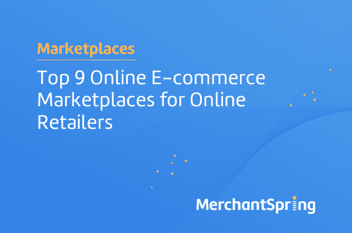


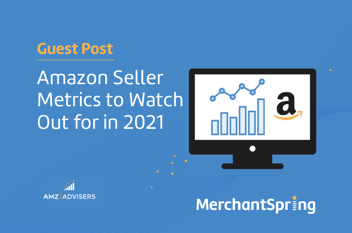


Add a Comment